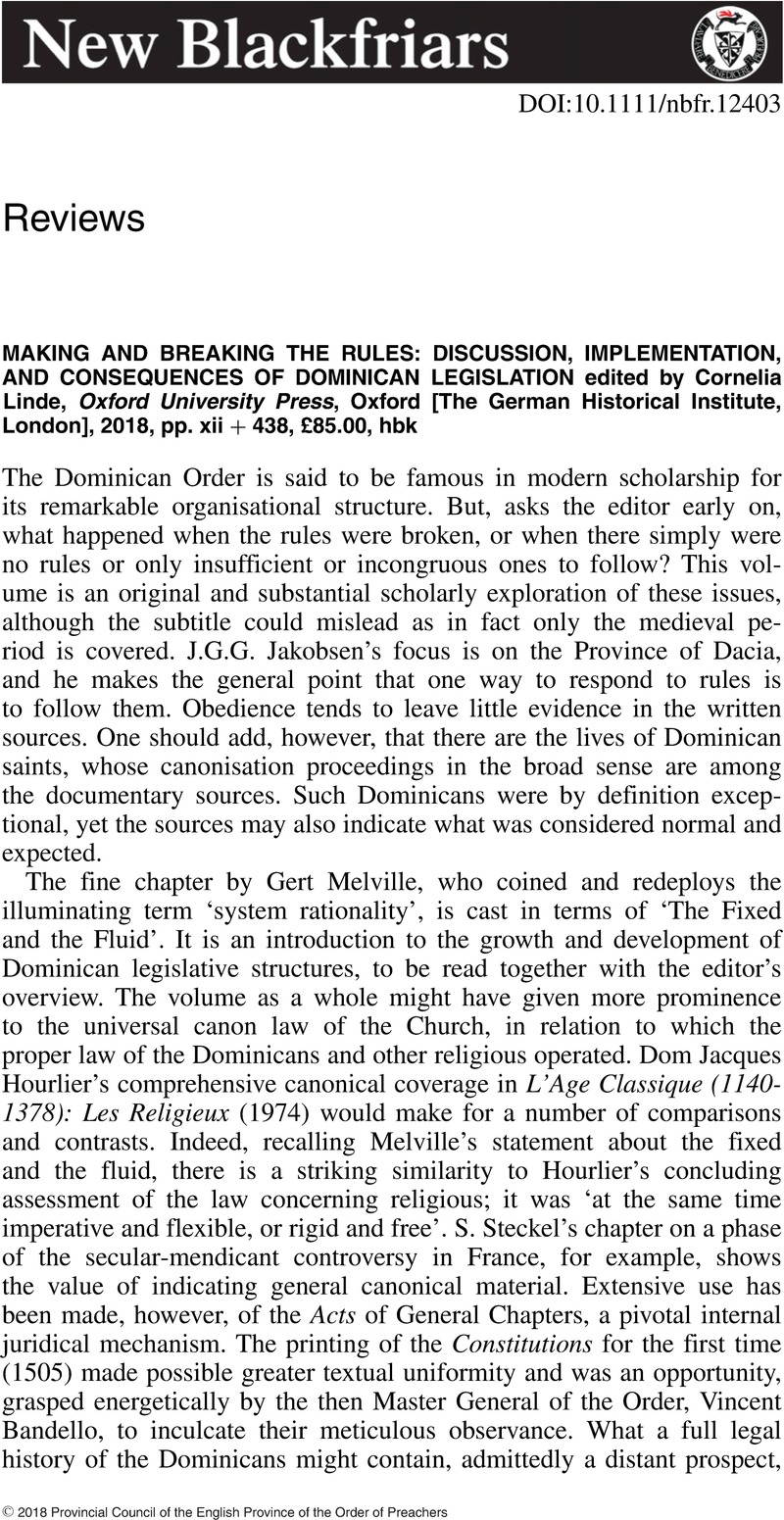No CrossRef data available.
Article contents
Making and Breaking the Rules: Discussion, Implementation, and Consequences of Dominican Legislation edited by Cornelia Linde, Oxford University Press, Oxford [The German Historical Institute, London], 2018, pp. xii + 438, £85.00, hbk
Review products
Making and Breaking the Rules: Discussion, Implementation, and Consequences of Dominican Legislation edited by Cornelia Linde, Oxford University Press, Oxford [The German Historical Institute, London], 2018, pp. xii + 438, £85.00, hbk
Published online by Cambridge University Press: 01 January 2024
Abstract
An abstract is not available for this content so a preview has been provided. Please use the Get access link above for information on how to access this content.

- Type
- Reviews
- Information
- Copyright
- Copyright © 2018 Provincial Council of the English Province of the Order of Preachers


